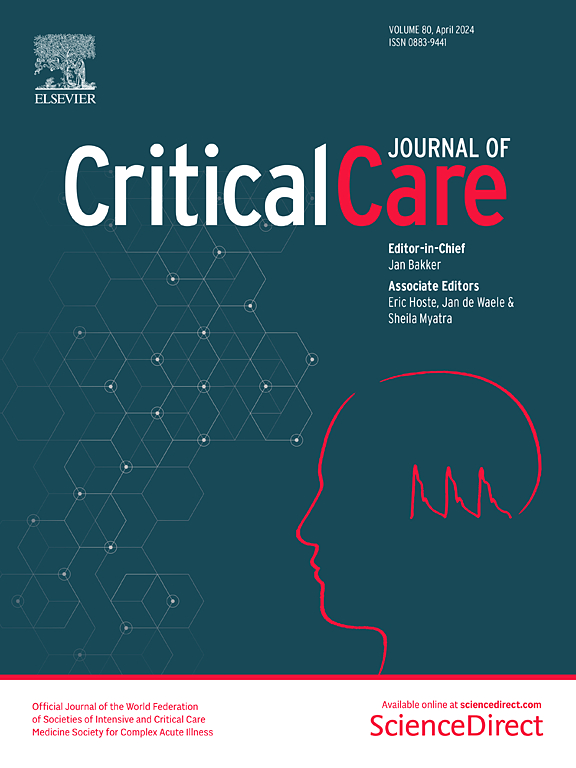Impact of comorbidities on management and outcomes of patients weaning from invasive mechanical ventilation: insights from the WEAN SAFE study
IF 8.8
1区 医学
Q1 CRITICAL CARE MEDICINE
引用次数: 0
Abstract
The impact of comorbidities on patients weaning from invasive ventilation is incompletely understood. We wished to understand the impact of the number and type of comorbidities on patients’ weaning from invasive mechanical ventilation enrolled in the ‘WorldwidE AssessmeNt of Separation of pAtients From ventilatory assistancE (WEAN SAFE) study. The study population consisted of patients enrolled in the WEAN SAFE study that commenced the weaning process. We categorized patients by the number of comorbidities (none, 1, 2, or 3 plus), and by specific comorbidity type. The primary outcome was the impact of comorbidities on delayed weaning and failed weaning from invasive MV. Secondary outcomes included the impact of comorbidities on ICU and hospital survival, and decisions to limit life-sustaining interventions. Of 4523 patients in the study population, 1614 (35.7%) had one comorbidity, 889 (19.7%) had two comorbidities, 432 (9.6%) had three or more comorbidities, while 1562 (34.5%) had no comorbidities. The most frequently occurring comorbid conditions were respiratory (22%) and cardiovascular (11%). Patients with comorbidities were more likely to fail a separation attempt, more likely to receive an extubation attempt, and to require more than 1 extubation attempt. The proportion of patients with failed weaning from invasive MV increased progressively with increasing comorbidities. Neuromuscular comorbidities were associated with increased weaning duration. Weaning failure was increased with respiratory, hepatic, renal, neuromuscular, and immune dysfunction comorbidities. Hospital mortality rates increased progressively from 16% with no comorbidity to 34% with ≥ 3 comorbidities. Each specific comorbidity was independently associated with increased hospital mortality. The presence of comorbidities was associated with decisions to limit life sustaining interventions. Most patients weaning from invasive ventilation have comorbidities, which are associated with higher weaning failure risk and worse outcomes. The adverse impact of comorbidities on the weaning outcomes and of the process are not explained by a less aggressive approach to weaning.求助全文
约1分钟内获得全文
求助全文
来源期刊

Critical Care
医学-危重病医学
CiteScore
20.60
自引率
3.30%
发文量
348
审稿时长
1.5 months
期刊介绍:
Critical Care is an esteemed international medical journal that undergoes a rigorous peer-review process to maintain its high quality standards. Its primary objective is to enhance the healthcare services offered to critically ill patients. To achieve this, the journal focuses on gathering, exchanging, disseminating, and endorsing evidence-based information that is highly relevant to intensivists. By doing so, Critical Care seeks to provide a thorough and inclusive examination of the intensive care field.
 求助内容:
求助内容: 应助结果提醒方式:
应助结果提醒方式:


